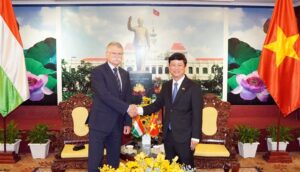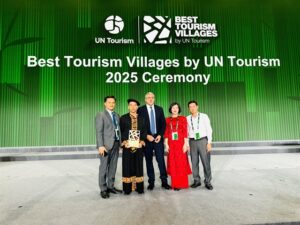President Lương Cường Urges Defence Ministry to Lead Military Restructuring

Hanoi, The Gulf Observer: State President Lương Cường on Thursday called on the Ministry of National Defence to take the lead in implementing the restructuring scheme based on the principle of “one agency handles multiple tasks, and each task is assigned to only one body.”
The President made this request during a working session with the ministry on the implementation of the Politburo’s Resolution 05-NQ/TW regarding the organisation of the Việt Nam People’s Army (VPA) for the 2021-2030 period and beyond.
Commending the ministry’s efforts, President Cường highlighted that by the end of 2024, the military had largely met its restructuring goals ahead of schedule, achieving a more synchronised and efficient organisational structure. He stressed the need to refine the military’s composition, ensuring a balanced force structure and preventing overlaps in responsibilities.
The President urged the Central Military Commission and the Ministry of National Defence to reassess Việt Nam’s current situation in light of rapid development and preparations for the 14th National Party Congress. He also called for an evaluation of global trends to provide strategic recommendations for the continued implementation of Resolution 05-NQ/TW.
Additionally, President Cường requested the VPA to maintain strong performance in combat, work, and production while ensuring the Party’s absolute leadership over the army. He further urged the military to spearhead the implementation of the 12th Party Central Committee’s Resolution 18-NQ/TW on streamlining the political system’s organisational apparatus for enhanced efficiency.
During the session, General Nguyễn Tân Cương, a member of the Standing Board of the Central Military Commission, Chief of the General Staff of the VPA, and Deputy Minister of National Defence, reported on the VPA’s progress in implementing Resolution 05. He underscored the military’s commitment to building a revolutionary, regular, elite, and modern army through a structured and scientific restructuring process.
General Cương noted that the ministry has dissolved and merged certain units while establishing new ones to enhance efficiency, eliminating redundancies and reducing intermediate command levels. Concurrently, it has reinforced defence systems in military regions, developed provinces and centrally-run cities into strong defence areas, and increased personnel for newly established units, training units, and combat-ready forces in key strategic locations, including border, sea, and island areas.


